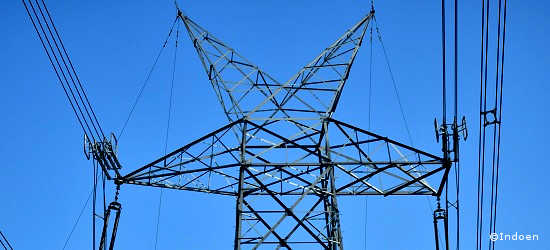India becomes world’s third largest electricity producer, ahead of Russia, Japan

With generation of 1,423 TWh, India is now the third largest producer and consumer of electricity in the world, way ahead of Russia, Japan, Germany and Canada.
A February 2018 report by India Brand Equity
Foundation (IBEF), a commerce ministry arm, said that over FY 2010–FY 2017,
electricity production in India grew at a CAGR of 7.03%.
The demand for electricity is expected to increase further at a CAGR of 7% to 1,894.7 TWh over FY 2007–2022. However, the current production levels are not enough to meet the demand as it outstrips the supply annually by about 7.5%.
While the per capita consumption of electricity in the country grew at a CAGR of 9.63% during FY 2006-FY 2016 reaching 1075 KWh in FY 2016, all India per capita consumption is estimated to reach 1,348 TWh by 2017.
Multiple drivers (industrial expansion, growing per-capita incomes) are leading to growth in power demand and this is set to continue in the coming years as well.
According to
the report India will become the world's first country to use LEDs for all
lighting needs by 2019, thereby saving Rs 40,000 crore (US$ 6.23 billion) on an
annual basis.
In March 2017, the power ministry launched an application named - GARV-II, to provide real time data related to rural electrification regarding all un-electrified villages in India. As per that, 16,385 out of 18,452 un-electrified villages in the country have been electrified up to February 2018. The government expect to electrify all villages by May 2018.
As of January 2018, total thermal installed capacity in the country stood at 219.81GW, while hydro and renewable energy installed capacity totalled to 44.96GW and 62.85GW, respectively.
Of the total 334 GW of current generation capacity, coal-based power generation is at 194 GW and this is expected to reach 330-441 GW by 2040.
Wind energy is
the largest source of renewable energy in the country. It accounts for an estimated 52.27% of total
installed capacity (62.85 GW). There are plans to double wind power generation
capacity to 60 GW by 2022. The other major power source, solar-based
generation, is expected to contribute 100 GW by 2022.
Declining solar power prices compared to thermal power has now prompted the government to switch to the renewable energy resources. Three coal power projects have been shelved in Odisha, Gujarat and Uttar Pradesh due to low rate of renewable solar energy at US$0.038 / kWh.
Initiatives taken by the Energy Efficiency Services have resulted in energy savings of 37 bkWh and reduction in greenhouse gas emissions by 30 million tonnes.
The report says that cumulative FDI inflows into the sector over April 2000–December 2017 were US$ 12.97 billion accounting for 3.52% of the total FDI inflows to the country. In India power is a 100% FDI allowed sector.
- India’s climate finance blueprint: A snail’s pace or a fast gallop?
- India imports 2.6 Mt steam coal, 0.8 Mt coking coal (23–29 Mar)
- India boosts energy security with record coal production
- Indian Government lifts restrictions on coal purchases for power plants
- India imports 4 Mt steam coal, 1.4 Mt coking coal (16–22 Mar)
- India’s solar energy revolution: A path to 500 GW by 2030 and beyond
- Powering the grid: The impact of electric vehicles on India’s energy infrastructure
- India imports 2.9 Mt steam coal, 1.3 Mt coking coal (09–15 Mar)
- India’s rising coal use: Balancing energy demand and sustainability goals
- India imports 2.8 Mt steam coal, 0.6 Mt coking coal (02–08 Mar)